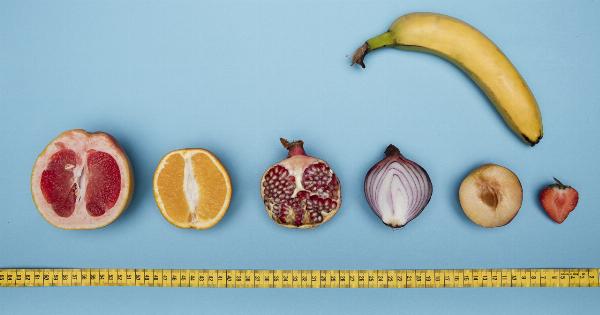For centuries, the existence and nature of the elusive point G has been the subject of much speculation and intrigue.
Claimed to be a highly sensitive erogenous zone that can lead to intense sexual pleasure, the point G has been a source of fascination and curiosity for many people. However, scientific research has been unable to provide definitive evidence supporting the existence of the point G. In fact, numerous studies have debunked this popular notion, leading us to question the validity of this widely accepted belief.
The Myth of the Point G
The concept of the point G was first introduced by Dr. Ernst Gräfenberg, a German gynecologist, in the 1950s. According to Dr.
Gräfenberg, the point G is a small area located on the anterior wall of the vagina, supposedly capable of producing intense sexual arousal when stimulated. This claim gained traction and popularized the idea of the point G as the holy grail of female sexual pleasure.
Many individuals, both men and women, became fixated on locating and stimulating this alleged erogenous zone in the hopes of unlocking unparalleled levels of sexual gratification.
Countless articles, books, and self-help guides were published, all aimed at providing guidance on how to locate and stimulate the point G to achieve mind-blowing orgasms.
The Lack of Scientific Evidence
Despite the widespread belief in the existence of the point G, scientific research has consistently failed to provide conclusive evidence supporting its existence.
Numerous studies have been conducted, employing various methods including ultrasound imaging, anatomical examination, and observation during sexual activity.
A study published in The Journal of Sexual Medicine investigated the presence of the point G in a large sample of women and found no consistent anatomical structure or location that could be identified as the point G.
Similarly, another study published in the British Journal of Obstetrics and Gynaecology failed to find any evidence of the point G’s existence after observing and interviewing hundreds of women.
Furthermore, a meta-analysis of over 80 published studies conducted by Dr. Nicole Prause and her colleagues at UCLA concluded that there is insufficient evidence to support the claim that the point G is a distinguishable anatomical structure.
The researchers found that variations in sexual pleasure and orgasmic response are more likely to be influenced by individual differences, psychological factors, and overall sexual health rather than the presence of a specific erogenous zone.
The Role of Clitoral Stimulation
One of the key reasons behind the debunking of the point G theory is the recognition of the clitoris as the primary source of female sexual pleasure.
The clitoris is a highly sensitive organ located at the front junction of the labia minora, and it contains thousands of nerve endings.
Research has consistently shown that clitoral stimulation is crucial for most women to experience orgasm and sexual satisfaction.
In fact, a study published in the journal Clinical Anatomy revealed that the clitoris extends deep within the pelvic area, with its internal structures connecting to the vestibular bulbs. These bulbs are thought to engorge with blood during sexual arousal, providing additional sensitivity and pleasure.
By focusing on clitoral stimulation, couples can enhance sexual experiences and increase the likelihood of orgasm, thereby dismissing the need to search for an elusive point G that may not even exist.
Diversity in Female Sexual Response
Another important consideration is the significant diversity in female sexual response.
Just as individuals possess different preferences, sensitivities, and levels of sexual pleasure, women also exhibit considerable variations in their genital anatomy and responsiveness.
Each woman’s body is unique, and what may be pleasurable for one individual might not be the same for another.
The variability in how women experience sexual pleasure and orgasm is influenced by a complex interplay of physiological, psychological, and environmental factors.
The Importance of Communication and Exploration
Instead of obsessing over the existence or location of the point G, it is far more productive for couples to focus on open communication, exploration, and experimentation.
Every person’s preferences and erogenous zones differ, and discovering what works best for each individual through open and honest dialogue can lead to stronger intimate connections and more fulfilling sexual experiences.
Engaging in sexual exploration as a couple is key to discovering and understanding each other’s unique desires and preferences.
This process involves trying different techniques, positions, and forms of stimulation, allowing couples to find what works best for them as a team.
Debunking Myths, Embracing Individuality
The point G myth has perpetuated for decades, leading countless individuals to believe in the existence of a specific spot solely responsible for exceptional sexual pleasure.
However, scientific research has debunked this notion and emphasized the importance of embracing individuality, diversity, and open communication.
By dispelling the myth of the point G, we can foster a more inclusive and accepting view of female sexuality. Each person’s experience is unique, and there is no one-size-fits-all approach to sexual pleasure and satisfaction.
Instead of searching for a mythical erogenous zone, let us focus on celebrating the diversity of sexual experiences while prioritizing consent, communication, and mutual pleasure.
In Conclusion
The idea of the point G may have captivated the public’s imagination for decades, but scientific research has been unable to verify its existence.
Numerous studies have failed to find any consistent anatomical structure or location associated with the point G. Instead, research has highlighted the importance of clitoral stimulation and the diversity of female sexual response.
By shifting our focus away from the mythical point G and towards open communication, exploration, and diversity, we can develop a more nuanced understanding of female sexuality.
Let us celebrate the uniqueness of individuals’ sexual experiences and prioritize mutual pleasure and satisfaction.





























